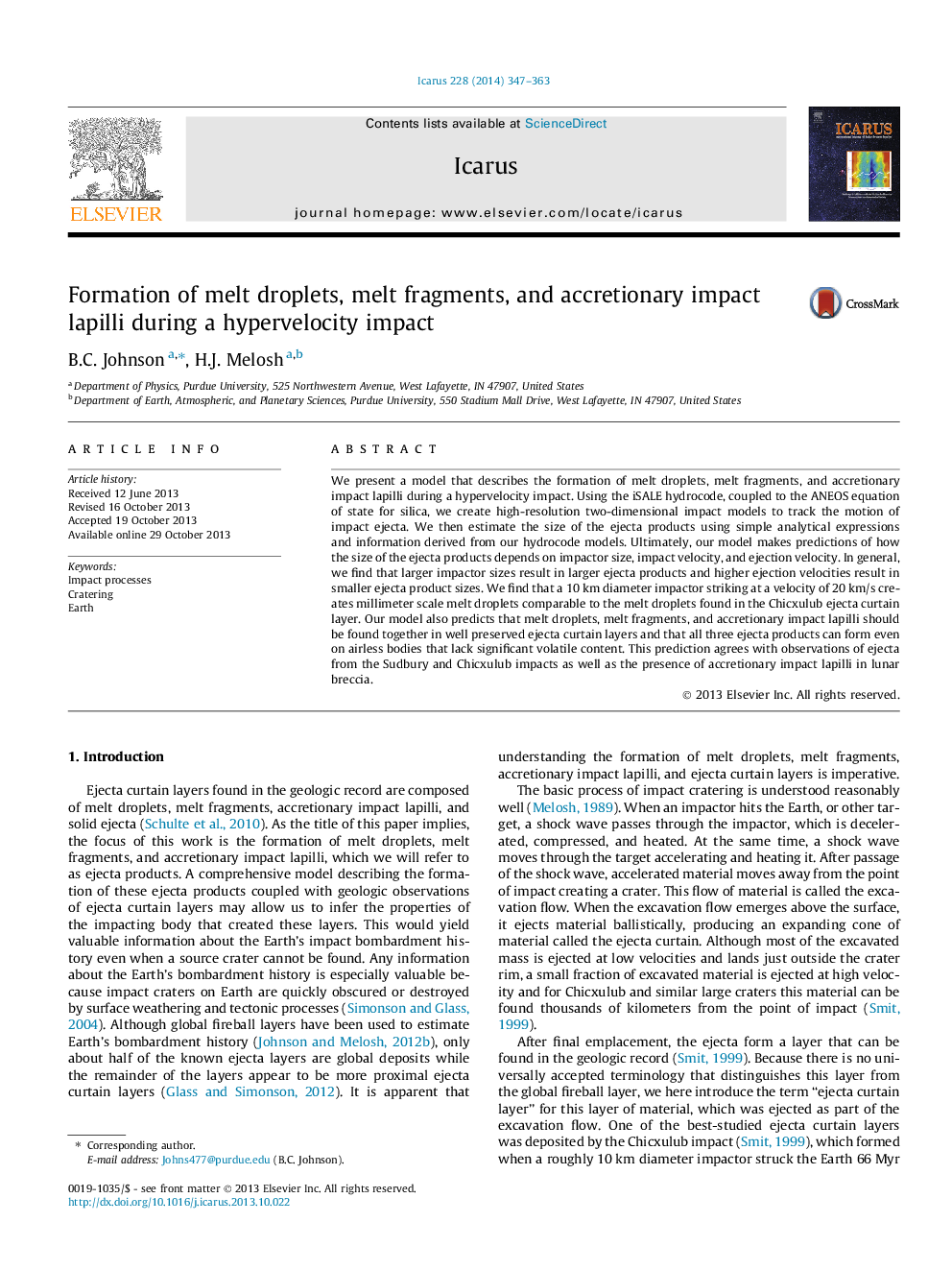| Article ID | Journal | Published Year | Pages | File Type |
|---|---|---|---|---|
| 1773299 | Icarus | 2014 | 17 Pages |
•We model the formation of melt droplet, melt fragments and impact lapilli.•We predict how ejecta product sizes depend on impactor size and ejection velocity.•Smaller impacts and higher ejection velocities produce smaller ejecta products.•Our model predictions agree well with observations of Chicxulub ejecta.
We present a model that describes the formation of melt droplets, melt fragments, and accretionary impact lapilli during a hypervelocity impact. Using the iSALE hydrocode, coupled to the ANEOS equation of state for silica, we create high-resolution two-dimensional impact models to track the motion of impact ejecta. We then estimate the size of the ejecta products using simple analytical expressions and information derived from our hydrocode models. Ultimately, our model makes predictions of how the size of the ejecta products depends on impactor size, impact velocity, and ejection velocity. In general, we find that larger impactor sizes result in larger ejecta products and higher ejection velocities result in smaller ejecta product sizes. We find that a 10 km diameter impactor striking at a velocity of 20 km/s creates millimeter scale melt droplets comparable to the melt droplets found in the Chicxulub ejecta curtain layer. Our model also predicts that melt droplets, melt fragments, and accretionary impact lapilli should be found together in well preserved ejecta curtain layers and that all three ejecta products can form even on airless bodies that lack significant volatile content. This prediction agrees with observations of ejecta from the Sudbury and Chicxulub impacts as well as the presence of accretionary impact lapilli in lunar breccia.
